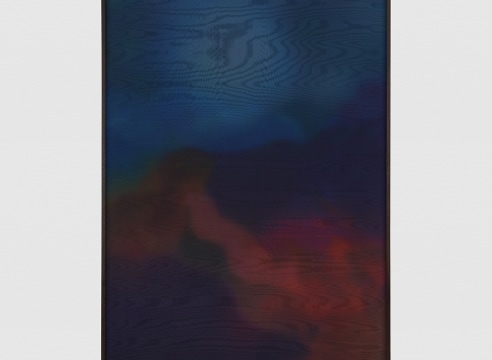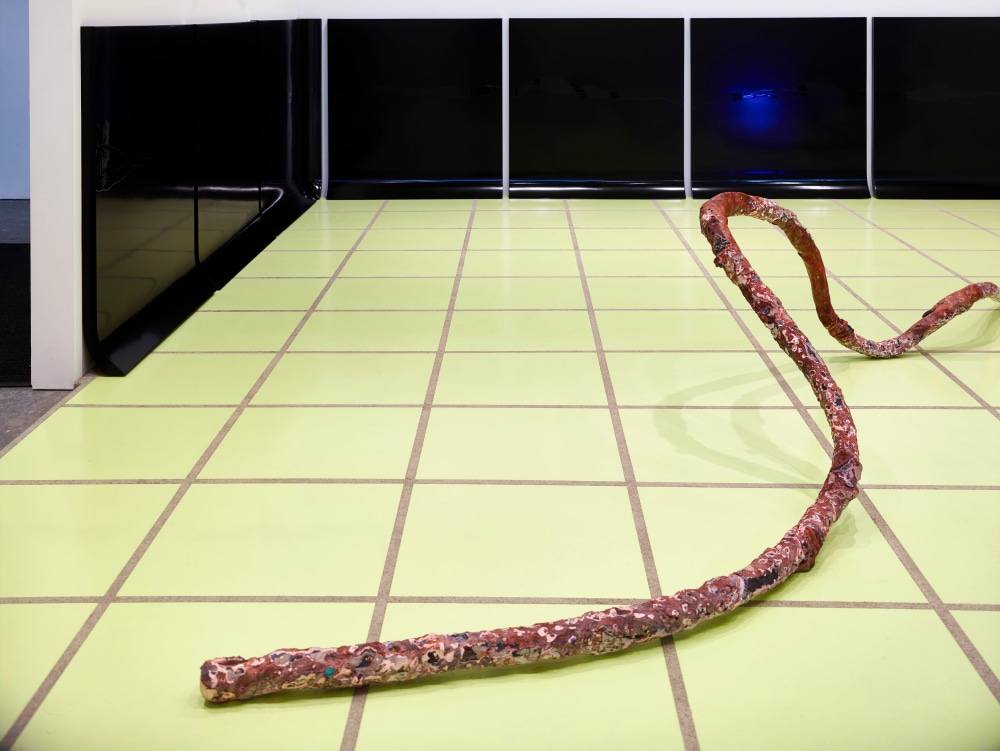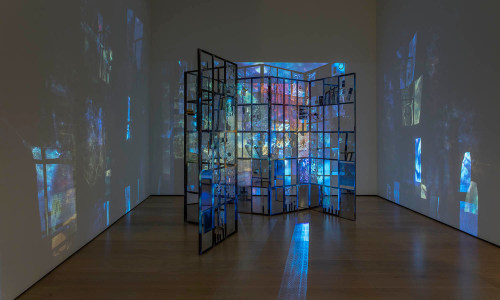
Around the glass and bronze entry to the Griffith Observatory, the building’s concrete exterior is inlayed with a series of turning patterns and stripes. In 2015, Rosha Yaghmai recreated a fragment of this façade, making her own patterned doorway to the stars on a smaller, single-body scale. These portals (Gates) were finished smooth with various pigments and products, including silver oxide, copper, Miracle-Gro®, and Aztec Secret bentonite clay. She installed each flush against the wall at Kayne Griffin Corcoran gallery with a rust covered pool chair placed nearby. Together they implied the body in various postures and against architectures—traveling between realms, or reclining. Since this scene, Yaghmai’s list of hallucinatory motifs and materials has steadily grown. For her solo exhibition, Miraclegrow, at the CCA Wattis Institute (January 15–March 30, 2019), she turns from tableau mode to full installation, fashioning a tiled room from the perspective of a spider. I was curious about this shift. We caught up over the phone in the weeks prior to the exhibition’s opening.
Laura Brown: Could you describe what you’re working on for Miraclegrow?
Rosha Yaghmai: I’m remaking a bathroom floor. Zooming into one little section of a floor, from observation. I saw a spider on my bathroom floor trying to crawl on my jumpsuit. I pulled the clothing away and watched the spider not totally understand what happened. It perceived the moment in some way I can’t comprehend. And so I wanted to zoom into its existence and think, what does the spider see? I can’t imagine.
LB: There’s a drastic shift in the entire landscape for that small animal.
RY: That must be so much a part of its daily existence. This idea of a weird, disappeared ghost landscape. And the spider is left perched next to these black tiles, so it’s seeing some kind of reflection, potentially.
For the Wattis show, I’ve created a faux floor that’s tile and grout, which acts as the pedestal for a 17-foot hair that is made from a rusty pipe. There are eight black tile panels, where the wall meets the floor. I’ve painted a very loose landscape onto the panels. It’s a backdrop for the hair but also acts as a semi-reflective surface, reflecting another indeterminate landscape of the room. There’s also a bug zapper. It reflects and follows you like a charged little spot of purple.







